So I'm currently exploring low side switches. I started off with an NMOS transistor array IC (Open drain), to develop a better understanding I've tried to understand the Darlington transistor array (Open collector) implementation as well. I have some doubts
Pretty basic, but for switching action the transistor operates in cutoff and saturation modes. Therefore if the Input is LOW, the BE of the first transistor wouldn't get forward biased therefore leading the second transistor in the pair to be off as well. So the collector potential would be equal to that of the floating output. So if I was to have a pull-up resistor then i'd say that for LOW input my load is getting powered from Vcc(external) Output HIGH.
Q. What are the input thresholds? V(IL) or V(IH) as per the snippet of the electrical characteristics? Like whats the thresholds to be considered as input high or low to the transistor is it defined by V(be) itself?
In saturation, the V(ce) is around 0.9V. Consider V(be) of the first transistor 0.7V drop, and the V(ce) in saturation is roughly 0.2V or so since its an common collector config the V(ce) is 0.9V.
Now as seen in the datasheet V(ce) varies with I(c) fair enough, is I(I) the base current? Only that'd make sense as I(b) increase would still lead to I(c) being fixed to I(c sat) when the transistor operates in saturation.
What is V(I(on)) except what the name suggests, is it V(bb) ?
Similarly V(OH(on)) is it analogous to V(DS) in a FET when its input is high?
Could you explain I(off) and I(I)
PS(I feel like I've understood the working but I can't understand the datasheet parameters except V(ce), I(cex) & clamping parameters
Reason for being in saturation -> Say input voltage is high enough, thereby current & voltage through base limiting resistor is enough to forward bias the BE junction.
For the NPN to be in saturation, BE & BC junctions must be forward-biased. Since the collector is floating or open. The output pin(collector connected to output) as per the working sinks current. So anyway Collector is at much lower potential than whatever is found at the base of the transistor therefore forward biased hence we can conclude that the transistor is fixed to saturation when it is on. (assuming there's some load being driven by external Vcc in the presence of pull up resistor. is the above right?
The output pin is internally connected to the collector of the BJT. I'd like to know, based on this, if my provided reasoning for the transistor being in saturation while sufficient V(BE) is applied, is correct or not.
I(I) being 0.93mA this is the input current associated with V(I). 0.93mA is enough to turn on the darlington pair with context in BJT terms since I(I) can roughly be said I(B). So reframing ~0.93mA is sufficient base current to turn ON the pair (in saturation).
By two of V(BE) wrt input threshold you mean two potential drops worth, would the threshold be near to 1.4V (+-)
With regard to VIon, I understood what you said, but paying attention to test conditions VCE is 2V. Granted it could be a possibility that VBE > 2V (for saturation). But wouldn't it lead to damaging the IC (as diode between Base & emitter can only handle 0.7V). Also the achieve the advertised IC of 500mA (keeping within the simultaneous output limit) I just keep increasing V(I)?
What is meant by full saturation. Do you mean deep saturation where the hfe is fixed -> based on which we calculate other parameters such RB which ensures that the transistor can never go into active region.

